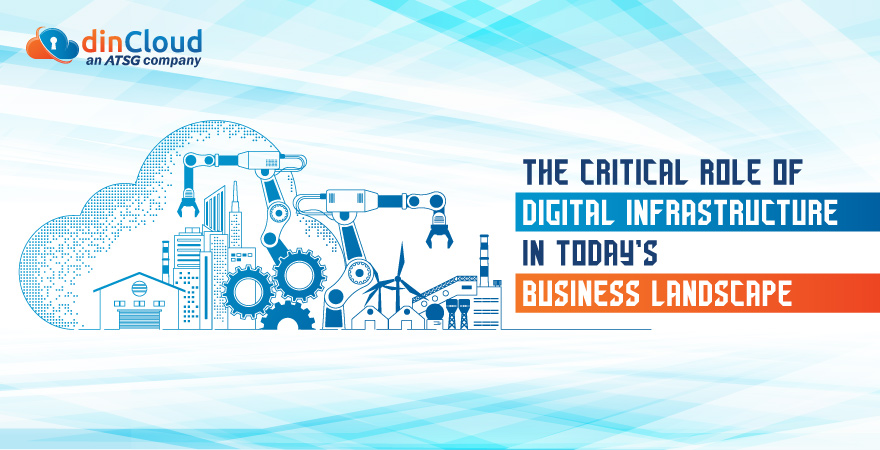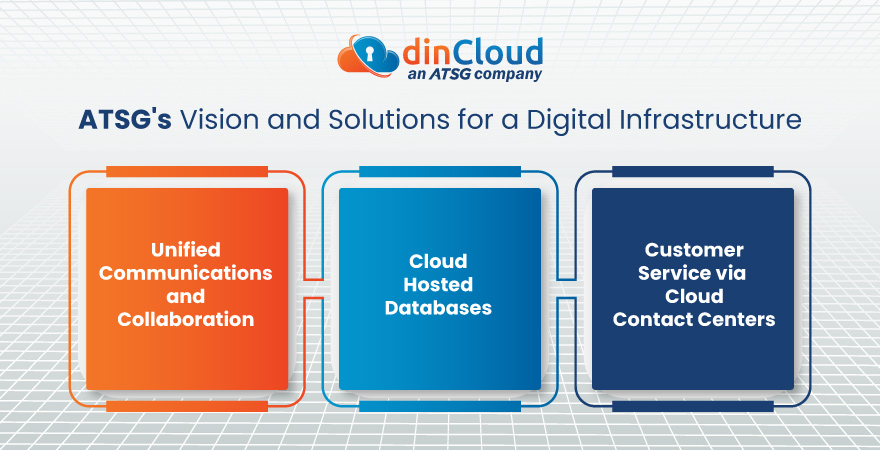The term infrastructure has a lot of dimensions, both in the physical as well as the digital world. In this post, we will be covering the digital aspects of infrastructure, and how they are becoming more important than ever for business organizations.
New science and technology revolutions invite a vision to the world that can only be prominent if there is a plausible construction. Digital Infrastructure gives enterprises the ability to connect networks on larger scales, and integrate vast amounts of data into the system. Digital Revolution has pushed industries today to move into digitizing their means of operations and uphold the transformation that is rapidly on the rise.
Leigh Fox, the CEO of an emerging tech company, said at a Technology Summit in 2021, “Digital Infrastructure is not your average construction; it is the development of a fast capital building, networking, and specialized technology”. Digital Infrastructure is now a primary source of competitive advantage amongst enterprises. It brings forward physical and virtual technologies, such as Unified Communication and Collaboration (UCC), Cloud Infrastructures, Platform as a Service (PaaS), and Software as a Service (SaaS) platforms.

Why is Digital Infrastructure the way to go?
Digital leaders must resolve traditional infrastructure, pushing them to architect digital infrastructure in innovative ways and mechanisms. As technology speeds the pace of change, enterprises need to introduce newer values and seize opportunities to become more competitive today.
These leaders are leveraging platforms that meet increasingly challenging infrastructures and future-proof them for tomorrow. As demands increase and evolve, digital leaders have found ways to maneuver infrastructure in minutes to promote better Employee Experiences and Customer Experiences.
Giant conglomerates are shifting to digital infrastructure, which has become necessary for their own well-being, the economy, and society. The growth of digital infrastructure magnifies the transition of traditional on-premise methods to digitized and technological means. Businesses have begun to re-create their services for global digital expansion and enhance their capabilities to build products and services and deliver them rapidly.
Digital infrastructure enables the growth of collaborative communication methods. It defines the probability of shifting from traditional places of operation to digital workplaces, which are independent of the limitations of a physical workspace, and the traditional nine to five working hours.
Digital Infrastructure and Cloud-Based Connectivity
Digital Infrastructure and the Digital workplace go hand in hand when it comes to workplace evolution. Organizations and companies adapt to technological strategies that support the realities of working in remote and hybrid times. Therefore, it imparts the concept of digital infrastructure and the workplace to work together to uphold the company.
Creating a digital workplace with the right tools and technology can bring exponential results, while digital infrastructure gives it meaning and becomes an actionable resource for companies to consider. Various digital workplace and infrastructural solutions have uncovered the grounds for communication and collaborative workflows. Cloud integration is also becoming a necessity for enterprises that want to pursue innovative strategies in the digital world.
Another aspect that highlights the promise of digital infrastructure is cloud-based desktops. Desktop as a Service (DaaS) has been one of the simplest forms of maintaining control of the inflow and outflow of information, enabling policy integration and unified management.
Cloud Desktops, like dinHVD, make it easy to implement broadened changes and maintain compliance considerations. Digital Infrastructure is all about saving and pushing past the boundaries of economic and social trends. Digital infrastructure, once paired with cloud desktops, promotes financial advantages as well.
By migrating to the Cloud, enterprises no longer need to purchase expensive computer workstations with large hardware drives. With the Cloud, enterprises end up storing data in a cloud service, resulting in more flexibility in employee workflow, while also creating a personalized environment. Cloud desktops administer faster than several individual physical computers. You can easily streamline and standardize your onboarding of new employees using computer images / golden images for your cloud desktop setup.
Since most global businesses have their employees work remotely, cloud desktops are an indispensable element of digital infrastructures. They are an excellent solution, offering cost savings, and centralized and seamless control to the deploying enterprise.
Digital Infrastructure Trends v/s Covid-19 Limitations
Technological trends went into overdrive as Covid-19 hit. According to Global Tech Trends Survey, 47% of IT decision-makers said their organizations had pushed their digital transformation initiatives. Enterprises with high-quality digital infrastructure mitigated pandemic-induced economic losses. Digitalized enterprises exhibited a much more robust Business Continuity (BC) posture. Digital infrastructure presents new opportunities to businesses that they can capitalize on, irrespective of any disruption that comes their way.
Covid-19 has encouraged enterprises to a fast-paced shift toward Digital Infrastructures. Trends emerging in today’s technological revolution are that digital infrastructure is shifting to the Edge, where business leaders are starting to comprehend the value of data. Edge Computing enables companies to analyze data closely, and gain efficient insights. Introducing newer forms of infrastructure in the digitized era gives businesses the potential to overpower the limitations of traditional, legacy platforms.
Digital Infrastructure has become more inclined toward a developer’s perception of the organization’s technology decisions. Developers are the drivers of any enterprise; their goals align with business agility through new technologies. Furthermore, software-defined technologies would help businesses deploy and manage their infrastructure with optimal efficiency.
Digital infrastructures are channeling the growing importance of partner ecosystems. Organizations are more inclined to move to hybrid as well as multi-cloud environments. Companies can now simultaneously support cloud-based and on-premise environments. More importantly, they can ensure the modernization of their IT systems in a quick and cost-efficient manner.
ATSG’s Vision and Solutions for a Digital Infrastructure

Unified Communications and Collaboration
Unified communications and collaboration (UCC) capabilities deliver seamless employee experiences and much better coordination. A cloud-based solution can allow your employees to collaborate, communicate, meet, and share files in real-time, allowing them to continue working, no matter their location.
Cloud Hosted Databases
Organization and customer data should be in the cloud, and accessible from anywhere. It is imperative to consider which databases and platforms could become cloud-based for optimized connectivity, service delivery, and security.
Customer Service via Cloud Contact Centers
Considering customer service channels, Digital Infrastructures enable organizations to migrate to a Cloud-based Contact Center, which is not on-premises and lives in the cloud.
A cloud contact center, such as the one offered by ATSG, can greatly enhance your Customer and Employee Experiences. This will be made possible due to years of expertise ATSG has, in the deployment of both on-premise, and cloud-based contact center solutions.
Conclusion
ATSG is the choice for mobility, Cloud solutions, digital infrastructure, communications, applications, and operations that are mission-critical for small, mid-sized, and large enterprises.
ATSG Inc. is leading the transformation into technology solutions as a service, with our tech-enabled managed services portfolio and a commitment to technology innovation, operational excellence, and client intimacy.
Recognized by industry leaders and industry-leading publications, ATSG has over 25 years of operating and delivering exceptional client experiences that directly result in competitive advantage, cost savings, growth, and improved operational efficiencies.


